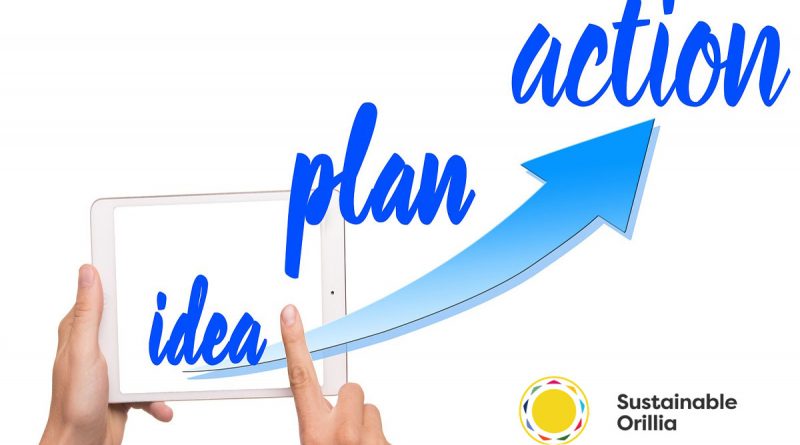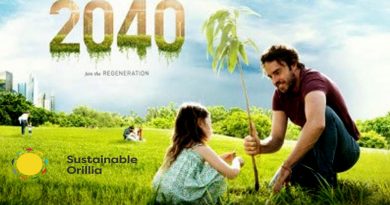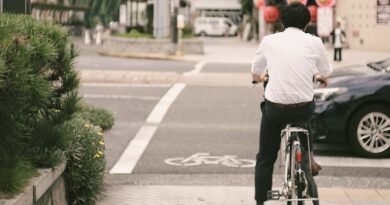Sustainable Orillia’s Tip Of The Week

Newest tips on top, check in every Saturday morning for new tips. If you have an idea to reduce waste, treat the environment better, or reduce carbon footprint that works, send it to Info@sustainableorillia.ca with the subject line: I've Got A Tip.
ARE YOU A BLUE BOX BUSTER?
Orillians have a wonderful record of blue box usage and we can be rightfully proud of the attempts we have made over past years to reduce waste going to our landfill.
But sometimes the items we intend to recycle end up going to the dump. Why? Some reasons follow:
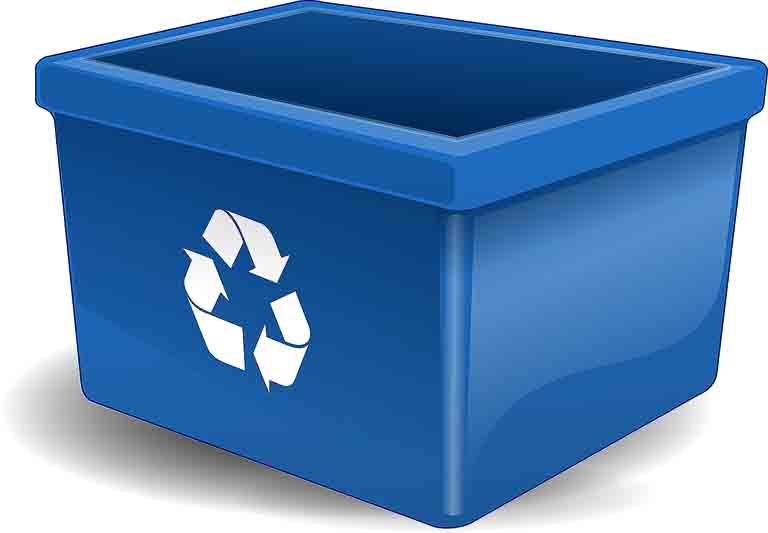
- If you neglected to wash and rinse food particles out of the container it goes to the dump.
2. If you’ve ignored the greasy stain on the cardboard pizza box It goes to the dump.
3. If you’ve misread the symbol on the product )the symbol with the 3 arrows means the package was made from recycled content) It may not be recyclable at all, and yes, off to the dump it goes.
All of us need to know the local rules for Blue Box recycling—and follow them closely. Otherwise, a lot of our efforts are for nothing.
NATURAL CLEANERS DO THE JOB
Vinegar, lemon, hydrogen peroxide, and baking soda, you probably already have these in your kitchen or bathroom. Did you know they can also be used to clean your house more cheaply and often more effectively than commercial cleaning products?
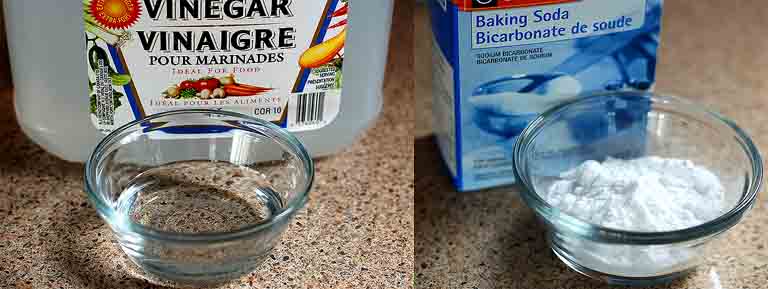
The April/May edition of Chatelaine magazine provides a detailed look at how these products can be used to cut grease, deodorize, disinfect, lift dirt and even whiten.
In addition, going online with a search for “cleaning with natural products” also turns up recipes for everything from a room deodorizer to how to clean the grease from your BBQ.
Like other planet-saving actions, these will also save you money and are better for your health.
SCARY HALLOWEEN TREATS
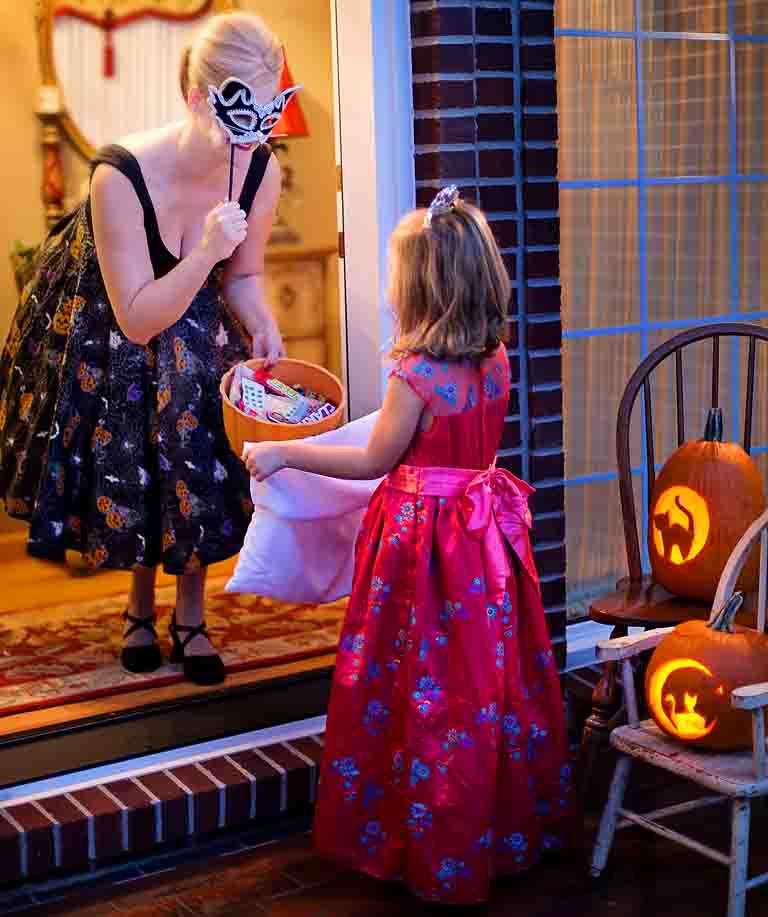
We know that Halloween treats are not always good for kids’ dental health. They can also be scary from an environmental perspective: Many contain palm oil, which may be produced in a way that causes deforestation and horrifying outcomes for endangered rainforest animals.
The Toronto Zoo has launched a campaign asking people to choose treats that protect rainforests, listing brands that use certified sustainable palm oil:
- Mars (Twix, 3 Musketeers, M&Ms, Snickers, Dove, Skittles)
- Hershey’s (Reese’s, Turtles, Whoppers, Twizzlers, Jolly Ranchers)
- Frito-Lay (Lay’s, Ruffles, SunChips, Tostitos, Cheetos)
- Quaker
- Ferrero
- Kraft Heinz
- Lindt & Sprungli
According to the World Wildlife Fund, many consumer products contain palm oil, from lipstick to soap to ice cream. Consumers can help by choosing products carefully.
WHERE’S THE BEEF?
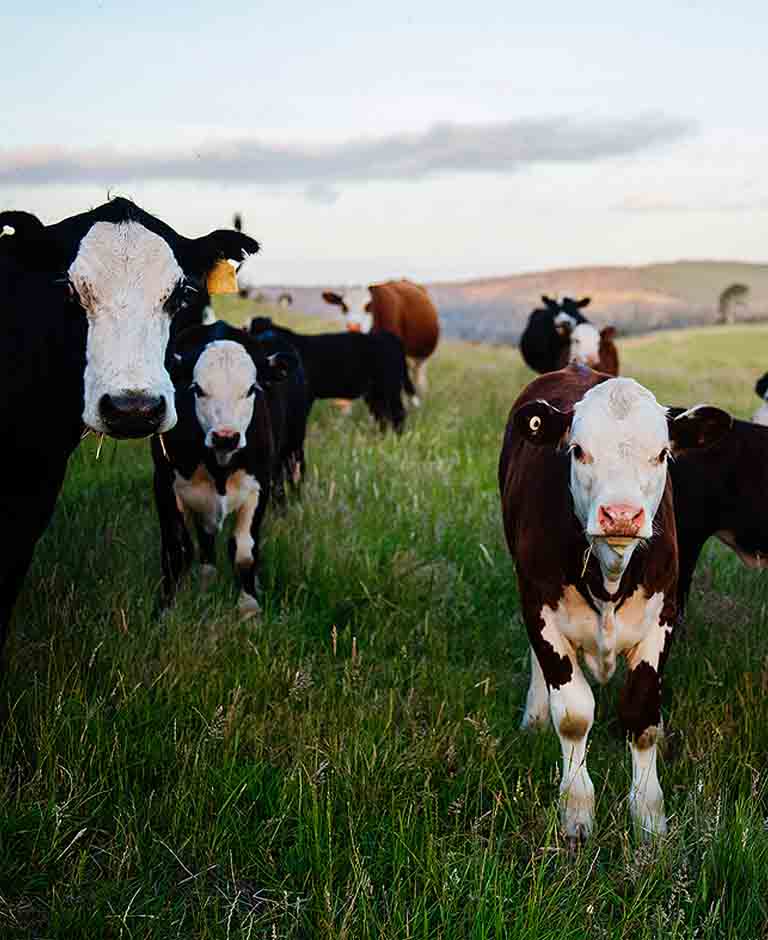
Who knew that eating meatloaf, hamburgers, and steaks was bad for future generations? Twenty years ago no one, that’s who. But now we know raising millions of cattle to produce beef is one of the primary sources of greenhouse gases (GHGs).
So changing our diets becomes one way we can make our way of life more sustainable. Face it, it also shrinks our food bill, making our weekly or monthly income also more sustainable.
Work at this. Substitute other meats for beef (see the Glory Bowl recipe online). Better? Plan a couple of meatless meals each week.
WINTERIZING YOUR GARDEN
There’s nothing like a beautiful fall day as red and yellow leaves fall gently onto our lawns and gardens. Gardeners, by nature, are long-term planners and although those falling leaves tell us that its time to prepare our flower and vegetable beds for winter’s blast, our thoughts are always focused on the season ahead.
Increasingly our thoughts are on how best to integrate sustainable practices into our gardening regimes. The mantra of Reuse, Recycle and Repurpose applies as much to gardening as it does to other parts of our lives.
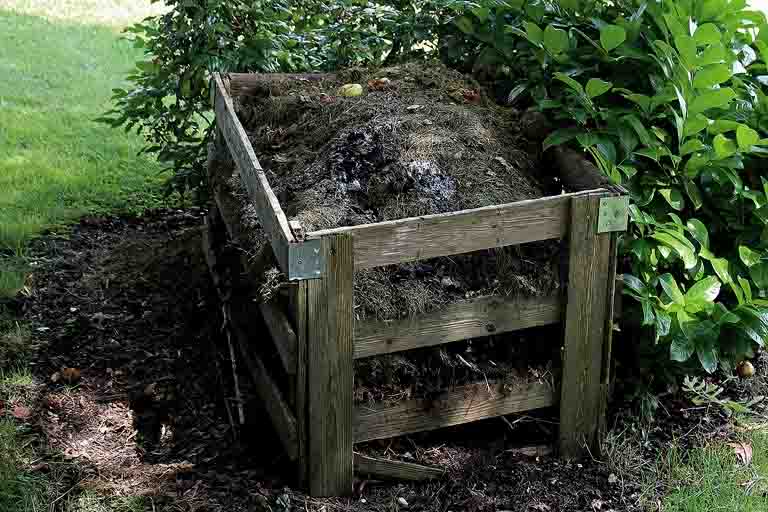
For example, as you prune or pull out your plants, chop them up and compost them for next year’s beds. If you don’t already have a composting system in your garden, start small in a corner of your garden with a simple pile of the chopped-up plants, cover with dirt and let nature take its course. You’ll be able to add this organic matter directly to your garden’s beds next season.
Do you have a stack of used plastic plant containers in your shed? This is a good time to take them back to your local nursery where they can be repurposed for next year’s plantings.
What about water? It’s never too late to find a way to capture rain water for the garden. Just remember to empty your container before it freezes. A good rain barrel not only reduces wasted water, it also adds character to the garden.
Winter is when most gardeners plan (and dream). This winter gardeners are encouraged to learn more about how they can integrate sustainable practices into those gardening plans. There is lots of helpful information on-line, and we here at Sustainable Orillia will be posting ongoing tips throughout the seasons to help build better gardens naturally. Meanwhile, enjoy autumn’s glow as you wind down another season and prepare for the next.
DO YOU REALLY NEED A CLOTHES DRYER?
Automatic clothes dryers account for a lot of electricity use in an average household – more than your clothes washer, fridge and TV combined.
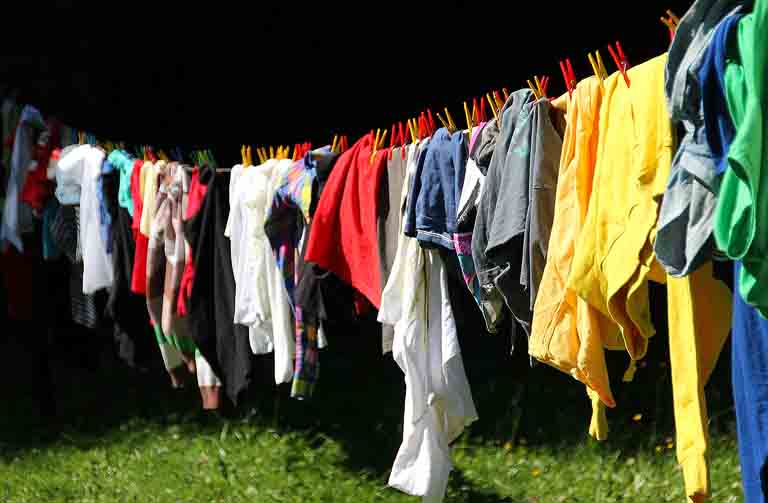
Clothesline drying is one of the easiest ways to save energy—and your money. You save 100% of the cost simply by hanging your clothes up to dry.
Clothesline drying is a simple task from a simpler time. Drying outside, if possible, is best, since clothes dry faster and the sun has a sanitizing effect. Indoor drying, especially in winter, adds welcome humidity to your home.
Get a clothes rack at your local hardware store for $25. Thanks for the tip Tony Telford.
GOT A DITCH? THINK BIOSWALE!
You can help the environment and beautify your home by planting a bioswale. A bioswale is typically a vegetated channel that carries storm-water runoff from streets, parking lots and roofs. The effect is to filter and slow down runoff water while making it cleaner and safer for the environment, allowing it to sink into the ground rather than run into streams and lakes.
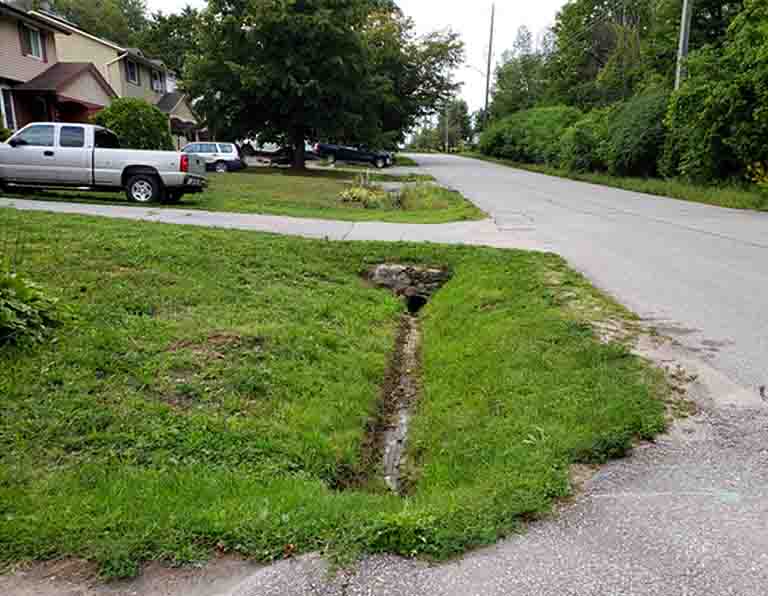
Some storm-water management practices, such as storm sewers and concrete channels, may be effective in handling runoff, but they’re ultimately eyesores. Bioswales offer a more pleasing alternative. They add aesthetic appeal to a residential or commercial site with texture, colour and habitat for birds and butterflies.
During seasonal shifts, city sewer and storm-water systems can struggle to keep up with increased water runoff. A 4 meter bioswale can absorb about a quarter of the total rainfall runoff that it receives.
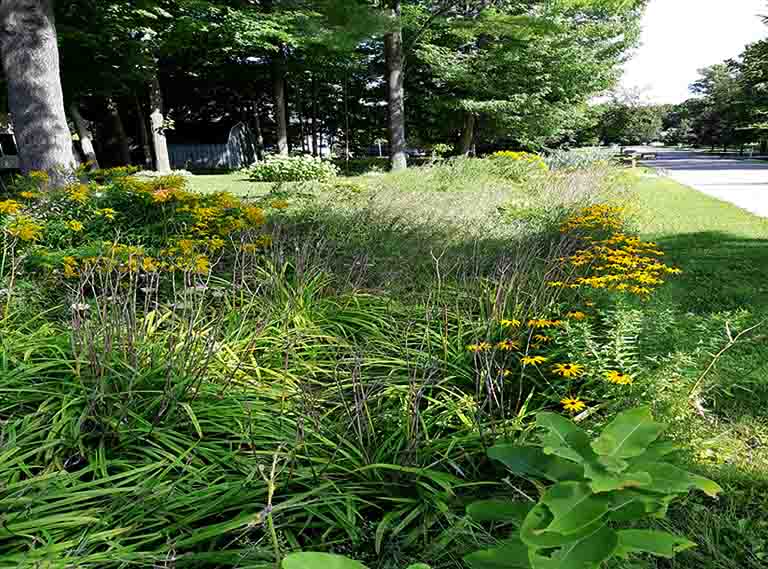
Once established, a bioswale needs little maintenance. They are vegetated with hardy native plants with established root systems which can withstand drought and a heavy downpour. While they are most effective in dealing with frequent, small rainfalls, they are also important in areas susceptible to storms. Liven up your landscape with a bioswale You’ll not only protect our lakes and reduce the load on our city infrastructure, you’ll also beautify your home. Thanks for the tip Dorthea and Jane
ATTRACT POLLINATORS TO YOUR GARDEN
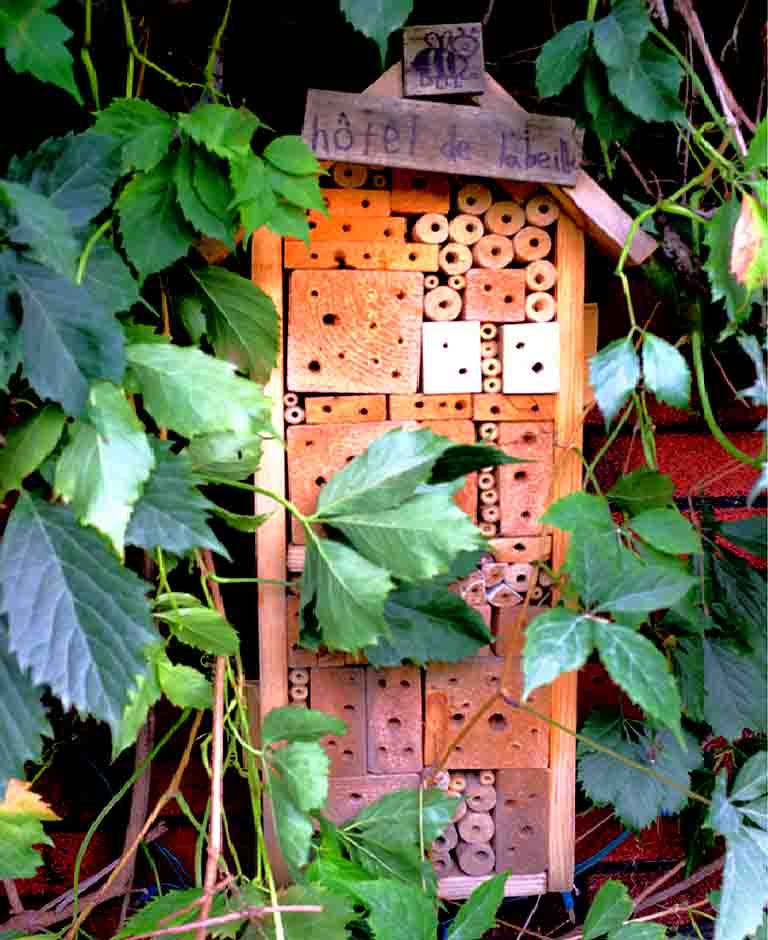
Birds, bats, bees, butterflies and beetles pollinate plants and are responsible for bringing us one out of every three bites of food. Worldwide, over half the diet of fats and oils comes from crops pollinated by these little critters. They transfer pollen grains from one flower to another, and facilitate the reproduction in 90% of the world’s flowering plants.
Pollination leads to the production of fruits we eat, and the seeds that will create more plants. Pollination begins with flowers. Gardeners can support pollinators by providing pesticide-free food sources, safe shelter, and access to clean water. Having variety in your plants and their bloom times will help attract and support pollinators. Consider planting a portion of your lawn with native wildflowers to act as a pollinator garden (you’ll save time and lawnmower gas). Butterflies such as the monarch are an important model species for ecologists when determining the health of an eco-system. Many gardeners plant milkweed in their eco-friendly gardens to attract monarchs by providing a source of food for monarch caterpillars. Another way to ensure local bees set up shop in your yard is to install a bee house or bug hotel.
JUMP ON THE BUS, GUS
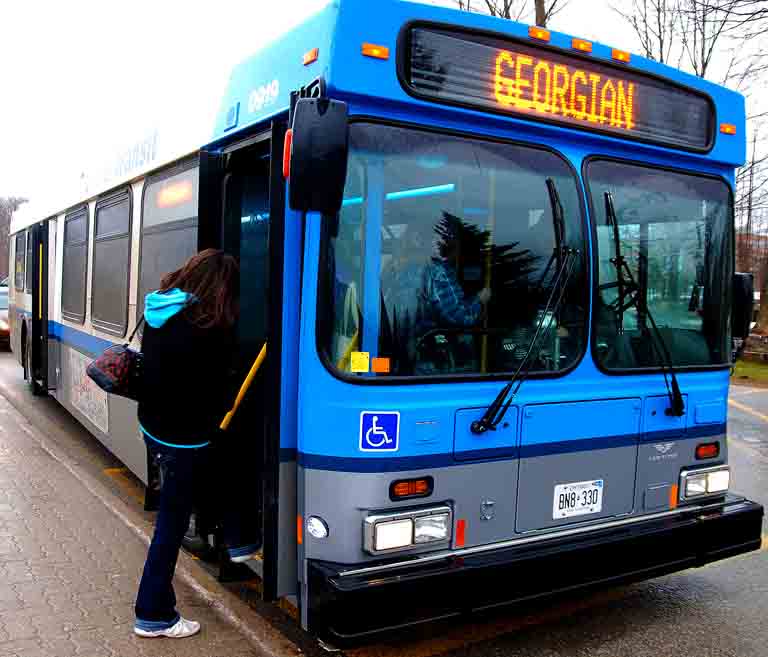
Take Orillia Transit or plan to carpool at least a couple of days a week. If possible ride your bicycle to work. Walk, even. Get some exercise—your body will thank you.
Driving to Toronto often? Take the GO bus or the GO train from Barrie instead. The new LINX bus will take you to Barrie for $4. It goes every 50 minutes between 6 am and 6 pm.
Learn how to connect with Toronto subways and buses. Leave the driving to someone else. The average family spends 20% of their family income on transportation. This means that reducing use of our cars can save us thousands of dollars each year.
Transportation is the source of 25% of our carbon emissions in Canada. So we’re saving money, but we’re also saving the planet. Let’s do it.

